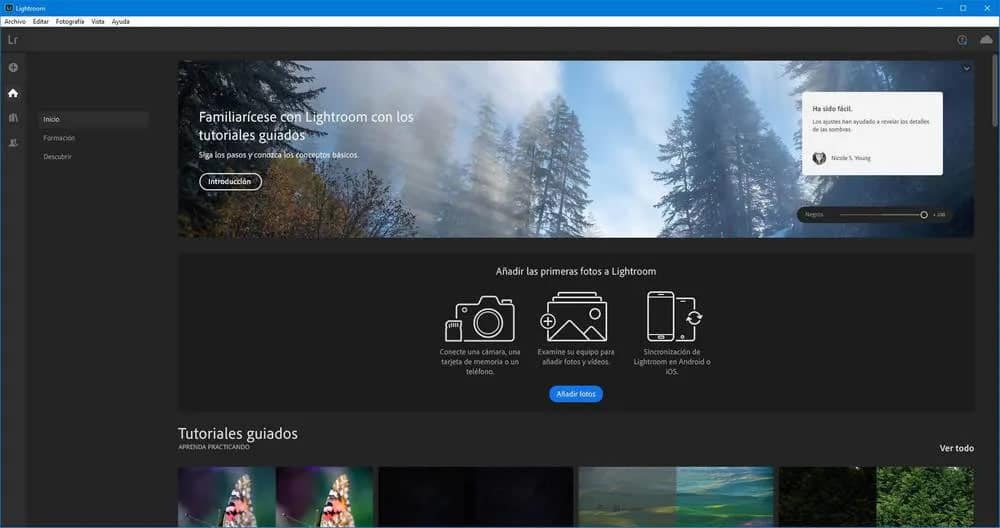
- #Adobe cc photoplan come with camera raw for mac
- #Adobe cc photoplan come with camera raw full
- #Adobe cc photoplan come with camera raw android
#Adobe cc photoplan come with camera raw full
Here’s the real kicker, though, with Lr CC you store the full resolution photos in the cloud, and this gives you access to your source photos from every device you own. The interface is (mostly) unified with the interface you find in Lightroom mobile for iOS/Android and the web (). Lr CC is the Mac/Windows gateway to the Lightroom ecosystem that lives in the cloud. Note: I’m deliberately referring to the operating systems on which these applications are installed because I feel it’s clearer than using words like mobile, phone, tablet, and desktop, which all have evolving meanings as our hardware continues to morph into new devices.

This is the reason why the version of Lightroom we’ve known these last 10 years is now going to be called “Classic.” I’ve been referring to this new application simply as “Lr CC,” which I realize can be confusing, but I haven’t found a better alternative yet.
#Adobe cc photoplan come with camera raw for mac
Adobe has taken this concept to the next level with a completely new application for Mac and Windows that’s called Adobe Photoshop Lightroom CC (Version 1.0). This cloud storage enables you to access those photos from both your computer and all of your mobile devices, as well as Apple TV, and even a web browser pointed to. If you’ve used Lightroom mobile at all, you’ve been introduced to the idea that the photos synced between the catalog on your computer and your mobile devices can be stored, either as smart previews or full resolution images (depending on what device they were imported through), on servers in the cloud. Lightroom as we’ve known it, now Lr Classic, is a tool that’s based on photos being stored locally in folders on drives connected to your computer. What’s the deal with the addition of Classic to the name, you rightfully wonder? Let’s get into that. For the sake of brevity, I’ll refer to this new version of the application as “Lr Classic” from here on out. In addition, there are new features and improvements in the Develop module that are very welcome. We’ll get into the specifics in a bit, but the marquee feature for this release is all about performance enhancements. The core goal of this release is a commitment to improving performance across the workflow.

Lightroom TodayĪdobe has just announced the successor to Adobe Photoshop Lightroom CC 2015/6, and its full name is Adobe Photoshop Lightroom Classic CC. Due to its subscription-based payment system, Lightroom CC 2015 also received a few new features during that time frame, which weren’t possible to add to Lightroom 6. The key to that integration is the Adobe ID associated with your CC subscription.
#Adobe cc photoplan come with camera raw android
Over that same time period, a mobile-based app for iOS and Android devices, commonly referred to as Lightroom mobile, was rapidly developed and integrated with Lightroom CC 2015. Both flavors were developed in parallel, with both receiving periodic bug fixes, as well as new camera and lens support. For the last 29 months, we had two flavors of Lightroom: one paid for through a Creative Cloud (CC) subscription and one paid through a one-time payment for a perpetual license. Fast-forward to 2015, when we were introduced to Adobe Photoshop Lightroom CC 2015.0/6.0. In 2007, Adobe Photoshop Lightroom Version 1.0 was released. For clarity’s sake, as there’s likely to be confusion, I’m going to use the full names for these products at the start, and then introduce the shorthand I’ve been using to keep them straight.

I also want to give you a heads-up that this isn’t just about a new version of Lightroom there’s also a whole new application (for both Mac and Windows) in the mix. It’s been more than two years since we’ve gotten a new version of Lightroom, and I’m very excited to tell you about what’s new, but I have to start by providing some historical context. This article is an excerpt from Issue 34 of Lightroom Magazine‚ just released today!


 0 kommentar(er)
0 kommentar(er)
